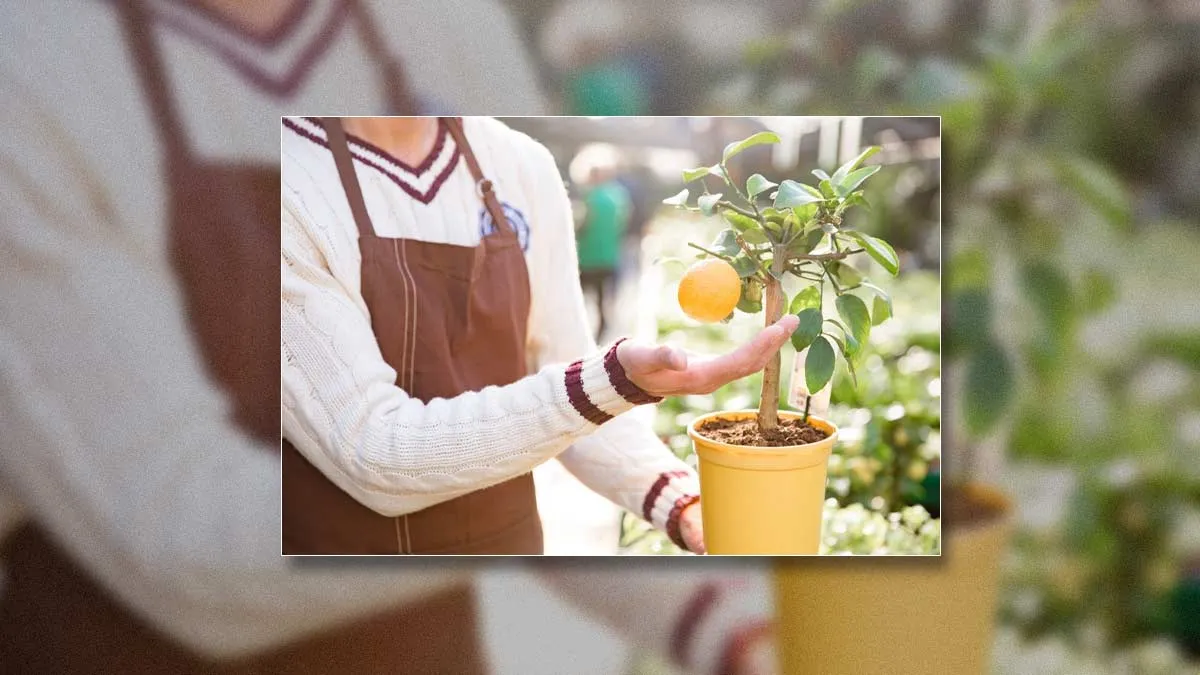
How To Grow Lemons In Your Balcony Garden: A Step-by-Step Guide
As the saying goes, ‘When life gives you lemons, make lemonade.’ But to do that, you need quality lemons and we're here to help you grow them. While buying an established lemon tree from a nursery can lead to quicker fruit production, starting from seed can be especially rewarding. This is a great option for new homeowners who want a plant that will grow with their family. Below, we’ve put together a simple guide on how to grow your lemon tree in your balcony garden.
How To Grow Lemons In Your Balcony Garden
Growing lemons in your balcony garden can be a rewarding experience, providing you with fresh fruit and a touch of greenery. Here's a detailed guide on how to successfully grow lemons in your balcony garden:
1. Choose the Right Lemon Variety
- Dwarf Varieties: Since you are growing lemons in a balcony garden, it's best to choose dwarf varieties that are well-suited for container growth. Varieties like Improved Meyer Lemon and Ponderosa Lemon are ideal for smaller spaces. These trees can grow up to 4-6 feet, making them perfect for balconies.
- Size Consideration: Keep in mind that while lemon trees are small, they can still require a large pot for healthy root growth.
2. Select the Right Pot
- Pot Size: Choose a large container (at least 18-24 inches in diameter) to allow ample space for the lemon tree’s roots to spread out. A pot that’s too small will stunt growth.
- Drainage: Ensure that the pot has proper drainage holes at the bottom. Lemons do not like their roots sitting in water, so good drainage is essential to avoid root rot.

3. Prepare the Soil
1
2
3
4
- Well-Draining Soil: Use a well-draining potting mix that is slightly acidic. A mix designed for citrus or a combination of garden soil, compost, and perlite or sand works well.
- pH Level: Lemon trees prefer soil with a pH of 5.5 to 6.5, so make sure the soil is slightly acidic. You can buy a soil pH tester to check the acidity level and adjust accordingly.
4. Planting the Lemon Tree
- Positioning: Place your lemon tree in the centre of the pot and fill it with the prepared soil around the roots. Make sure the tree is sitting at the same depth as it was in the nursery container.
- Watering: After planting, water the tree thoroughly to settle the soil. Let the excess water drain out of the pot.
5. Provide Proper Light
- Full Sunlight: Lemon trees require full sunlight to thrive. Ensure that your balcony gets at least 8-10 hours of direct sunlight each day. If your balcony is shaded, you may want to move the plant to a sunnier spot or consider using reflective materials to increase sunlight exposure.
- Rotate the Pot: If your tree is not getting even sunlight, rotate the pot every few weeks to ensure all sides get equal exposure.
6. Watering and Fertilising
- Watering: Water the lemon tree deeply when the top 1-2 inches of soil feels dry. Make sure the water drains out of the bottom. Avoid over-watering, as lemon trees don't like standing water around their roots.
- Fertilising: Lemon trees need regular feeding to promote healthy growth. Use a slow-release, balanced fertiliser (or one designed for citrus) every 6-8 weeks during the growing season (spring and summer). During fall and winter, reduce the frequency of fertilization.
- Organic Fertilisers: You can also use organic options like compost or fish emulsion. Be sure to follow the recommended amount to avoid over-fertilising.

Don't Miss: 5 Easy Gardening Ideas For Small Balcony
7. Pollination
- Indoor Pollination: If your balcony is not near other lemon trees, you may need to assist with pollination. Gently shake the tree or use a small brush to transfer pollen from one flower to another.
- Outdoor Pollination: If your tree is outside in a garden, bees and other pollinators will help with pollination.
How To Take Care Of Lemon Plant
Lemon plants thrive in warm conditions. Ideally, they should be kept in temperatures between 65-85°F (18-29°C). They can tolerate slightly cooler temperatures, but anything below 50°F (10°C) can damage the plant. If your balcony gets too cold in winter, consider bringing the plant indoors or protecting it with a cover during chilly nights.
Moreover, lemon plants need consistent watering, but it’s crucial not to overwater them. Water the plant when the top inch of the soil feels dry. Make sure the pot has drainage holes to prevent water from accumulating at the bottom, as this can cause root rot. During the warmer months, you may need to water more frequently, while in cooler months, reduce watering. Always ensure that the soil is well-draining to avoid waterlogging.
Don't Miss: Gardening Tips: 5 Plants You Can Grow In Your Balcony This Summer Season
Keep reading Herzindagi for more such stories.
Credits: Freepik
Also watch this video
Herzindagi video
1
2
3
4